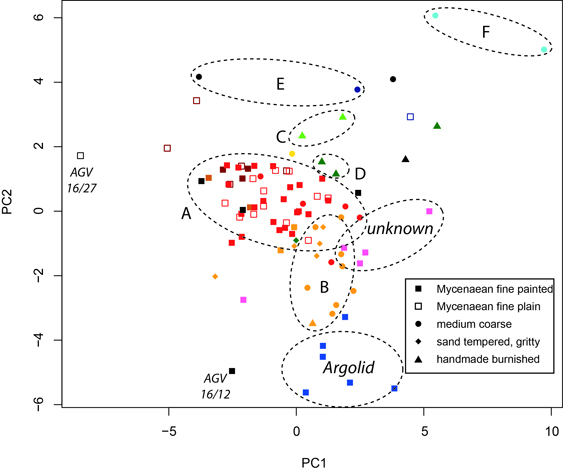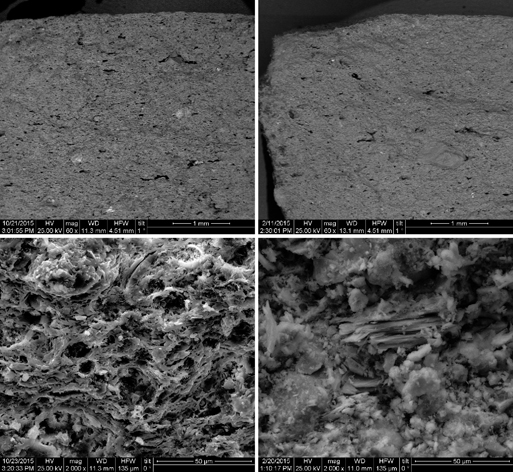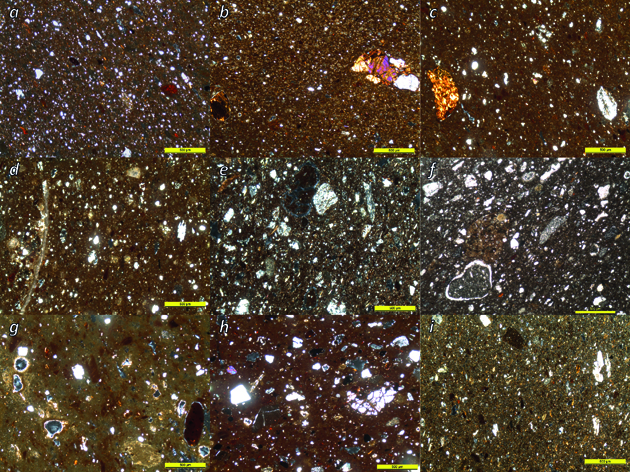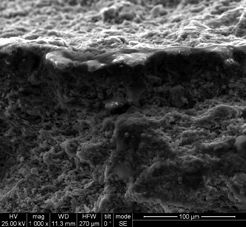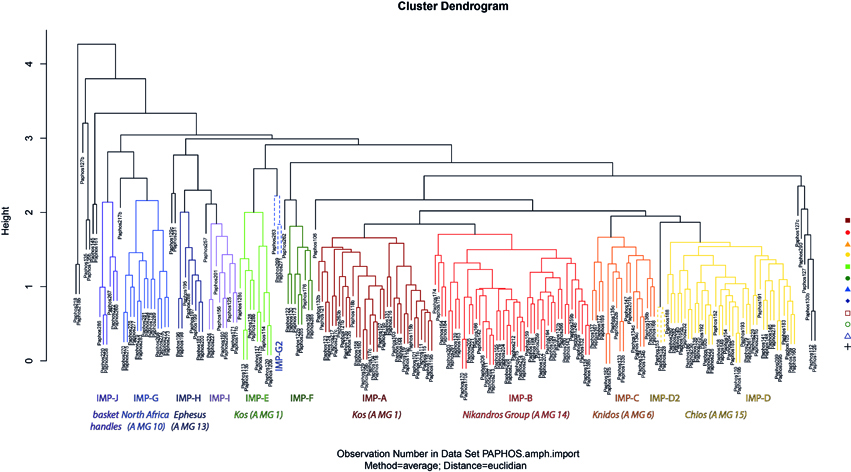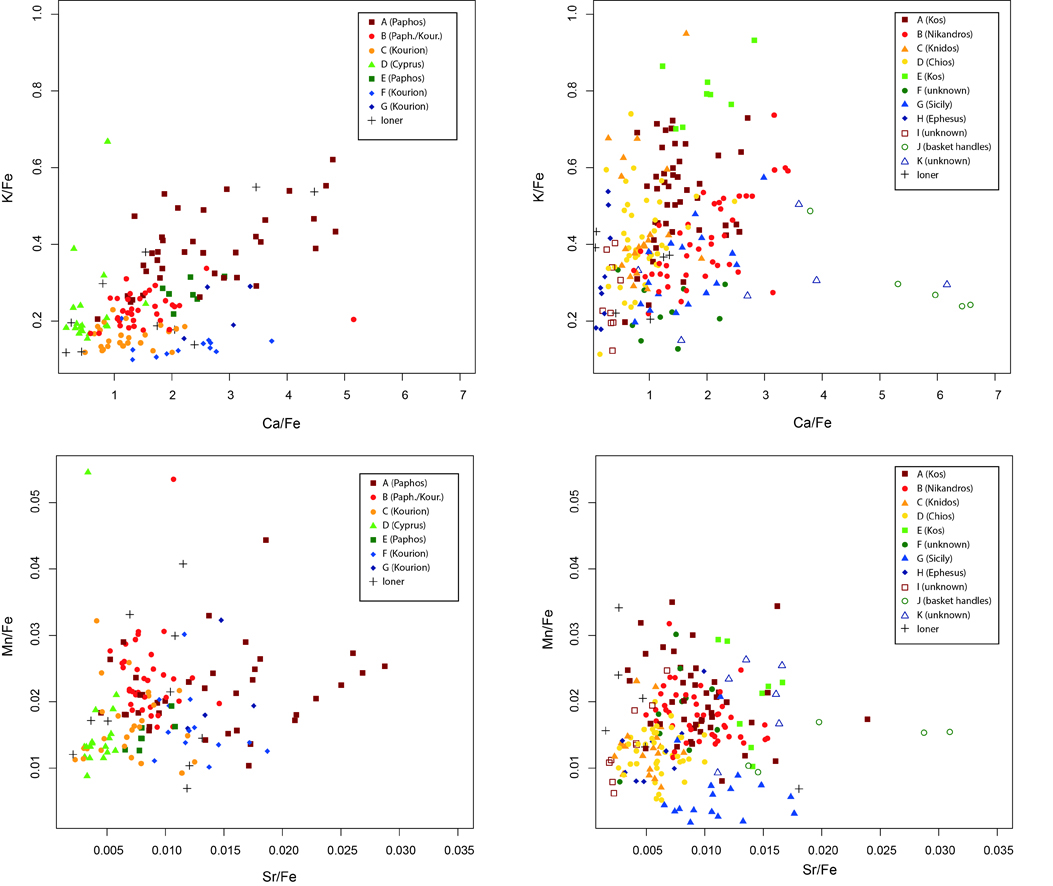Provenance and technology of ancient and modern materials
Methodologies are developed and optimized for the study of provenance and technology of archaeological materials with special emphasis on ceramics. Prehistoric and historic ceramic production and exchange is studied by a combination of materials characterization techniques focusing on the application of (trace) elemental analysis, petrographic examination and scanning electron microscopy (SEM). The goal is to illuminate modes of production, consumption and exchange of the past. Integral part of the studies is commonly the survey and investigation of potential raw materials accessible in the vicinity of supposed production sites. Even though for example in the case of ceramics clay processing has to be considered, impeding eventually the direct linking of ceramic compositions to specific clay deposits, the diversity of the natural clays constitutes the primary source for compositional variability of the ceramics manufactured from them. For the trace element examination of the ceramics neutron activation analysis (NAA) is applied, a method which requires rather marginal sample amounts. NAA provides on the other hand highly reliable reference data in terms of analytical precision and accuracy. The ceraDAT database, which is developed and administrated by the CCM Group, contains the elemental compositions of more than 11.000 ceramic artifacts from the Eastern Mediterranean Region analysed by NAA in different laboratories.
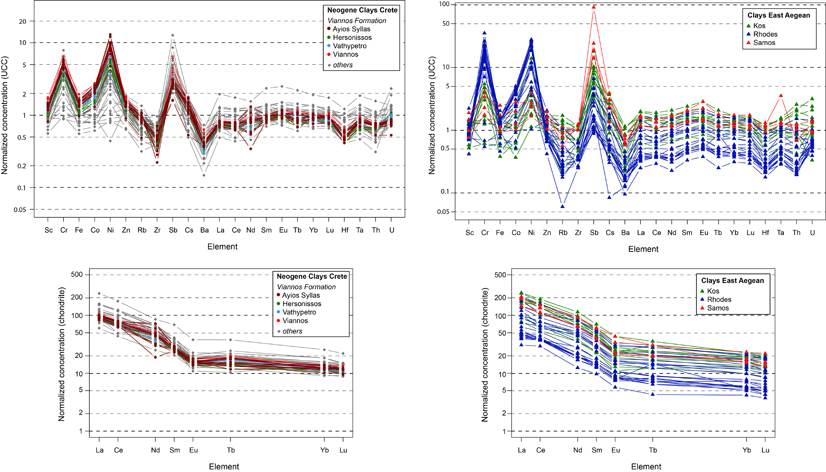
Trace element compositions of clayey raw materials from Central Crete (left) and from East Aegean islands (right): The element concentrations are normalized to the upper continental crust composition (UCC).
As a complementary analytical method portable X-ray fluorescence spectrometry (pXRF) is used. Even though pXRF is less precise and accurate it allows for non-invasive analysis and large numbers of measurements, which in combination with laboratory measurements provide information about considerably large ceramic assemblages.
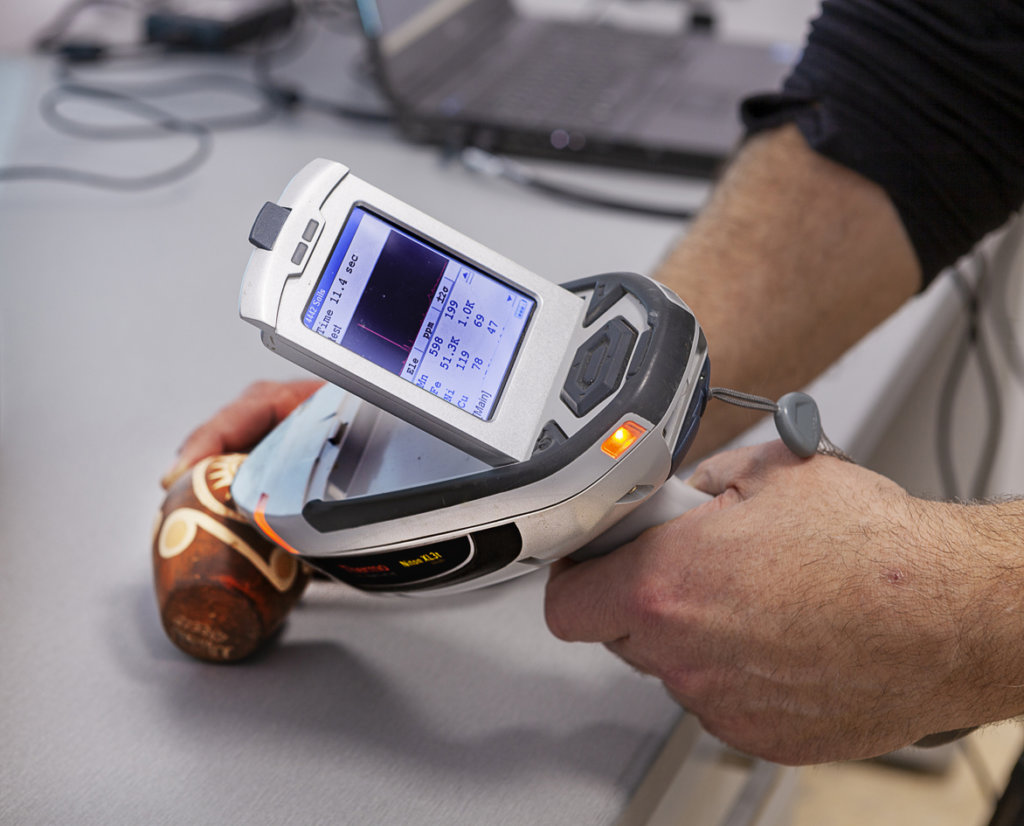
Non-invasive elemental analysis using a NITON XL3t GOLDD+ handheld system (Thermo Fisher Scientific)
Petrographic thin-section examination is applied for the characterization of the ceramic fabrics revealing information about clay type and characteristic non-plastic inclusions, which can be linked eventually to specific geological environments.
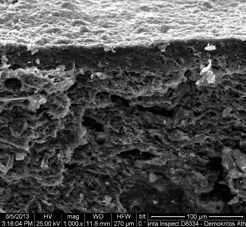
Thin sections of ceramic fabrics under the petrographic microscope
The ceramics’ microstructure as well as surface treatment is further examined under the SEM. In high magnification SEM allows also for examining the micromorphology of the clay matrix and the degree of vitrification, which provides information about the original firing conditions.
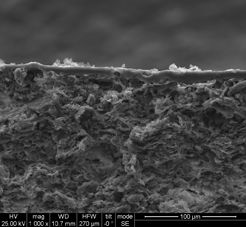
Black slipped surface in Hellenistic tradition of a bowl from Ancient Bactria (left) Slipped surface on a Protogeometric skyphos from Central Crete (right)
Apart from the composition and microstructure the thermo-mechanical properties of materials are studied, taking into account the performance and affordances of archaeological materials, and investigating the engineering and design interface with past human behaviour. Insights generated on raw material selection, clay paste preparation, pyrotechnology and material properties of the end products are utilized for the development of modern building materials in an approach we term ‘archaeomimetics’.
Publications
Day, P. M., Hein, A., Kardamaki, E., Maran, J., Tenconi, M., Waiman-Barak, P., Maritime commodity trade from the Near East to the Mycenaean heartland: Canaanite Jars in final palatial Tiryns, Jahrbuch des Deutschen Archäologischen Instituts (2020) 1-99.
Hein, A., Georgopoulou, V., Nodarou, E., Kilikoglou, V., Koan amphorae from Halasarna – Investigations in a Hellenistic amphorae production centre, Journal of Archaeological Science 35, 4 (2008) 1049-1061. DOI: 10.1016/j.jas.2007.07.009
Hein, A., Kilikoglou, V., Compositional variability of archaeological ceramics in the Eastern Mediterranenan and implications for the design of provenance studies, Journal of Archaeological Science: Reports 16 (2017) 564-572. DOI: 10.1016/j.jasrep.2017.03.020
Hein, A., Kilikoglou, V., Ceramic raw materials. How to recognize them and locate the supply basins. I Chemistry, Archaeological and Anthropological Science 12 (2020) 180. DOI: 10.1007/s12520-020-01129-8
Hein, A., Dobosz, A., Day, P.M., Kilikoglou, V., Portable ED-XRF as tool for optimizing sampling strategy – Case study of a Hellenistic amphora assemblage from Paphos (Cyprus), Journal of Archaeological Science 133 (2021) 105436. DOI: 10.1016/j.jas.2021.105436
Hein, A., Revisiting the groups – Exploring the feasibility of portable EDXRF in provenance studies of transport amphorae in the Eastern Aegean, in: M. Hegewisch, M. Dazkiewicz and G. Schneider (eds.) ‘Application of portable energy-dispersive X-ray fluorescence to the analysis of archaeological ceramics and glass’, Topoi - Berlin Studies of the Ancient World - Vol. 75 (2021) 43-61. DOI: 10.17171/3-75
Kilikoglou, V., Grimanis, A.P., Tsolakidou, A., Hein, A., Malamidou, D., Tsirtsoni, Z., Neutron activation patterning of archaeological materials at the National Centre for Scientific research “Demokritos”: The case of black-on-red Neolithic pottery from Macedonia, Greece, Archaeometry 49, 2 (2007) 301-319. DOI: 10.1111/j.1475-4754.2007.00303.x
Martínez Ferreras, V., Angourakis, A., Hein, A., Gurt Esparraguera, J.M., Sverchkov , L.M., Sánchez del Corral, A., Pottery in Hellenistic tradition from the Kurganzol fortress (Uzbekistan), Journal of Archaeological Science: Reports 21 (2018) 1044-1054. DOI: 10.1016/j.jasrep.2016.11.049
